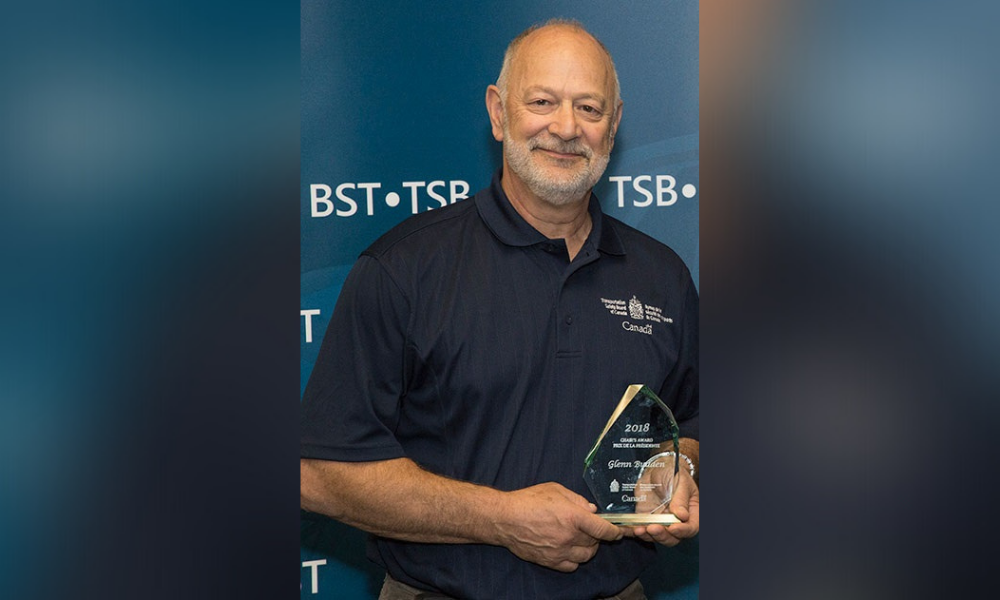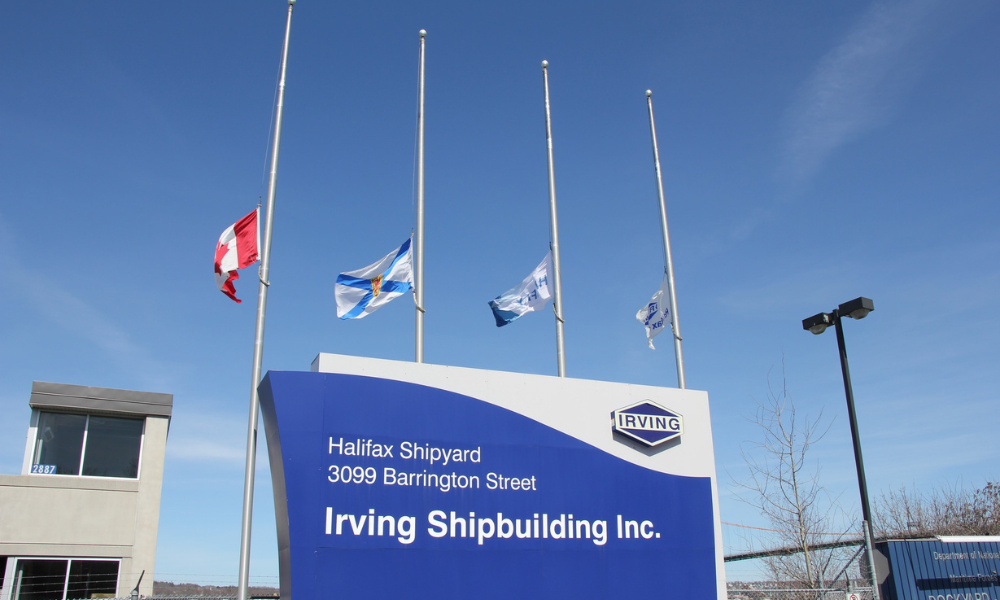Working in this industry is more dangerous in Canada than any other country and senior safety investigator believes improvements are not happening fast enough

Fishing has long been seen as one of Canada’s most dangerous occupations – and a slew of statistics can be found to back that claim up.
Health and safety consultancy Arinite analysed recent data available on occupational fatalities from the International Labour Organization (ILO), National Security Council (NSC) and Elsevier to paint a picture of occupational fatalities around the globe.
The data revealed fishing to be the most dangerous occupation in the world, with an average fatality rate of 15.96 deaths per 100,000 workers – and worryingly fishing is the most dangerous in Canada.
There are 27.32 fatal occupational injuries per 100,000 workers in the Canadian fishing industry:
“Some industries do present more hazards to workers than others. But where hazardous industries, such as construction and agriculture, have been regulated to a risk level more similar to comparable countries, fishing in Canada is far more dangerous than in any other country,” says Robert Winsloe, Managing Director, Arinite.
“The results of this study highlight that even in countries paving the way with occupational health and safety regulation such as Canada, there can still be certain industries that need greater review and regulation,” says Winsloe.
Transportation Safety Board
A separate 2017 investigation by The Globe and Mail found that fishing was Canada’s deadliest sector.
From 2011 – 2015, the report revealed that the average fatality rate for traumatic injuries was 69.8 deaths per 100,000 workers in fishing, hunting, and trapping.
Numerous studies over the last few years have consistently said the same thing – that fishing is one of the most deadly occupations in Canada. It can be hard to keep track of exact numbers as different statistics are reported by provinces, workplaces, coroners, etc.
Glenn Budden, Senior Marine Investigator, Transportation Safety Board of Canada (TSB), says that TSB’s statistics show that in the last three years between 2018 – 2020, there have been around 45 fishing relating fatalities in Canada. This, he says, is the highest three year period for 20 years.
The TSB says that between 1999 and 2008, an average of 14 people died in fishing accidents each year.
Despite fluctuating numbers, Budden says that ultimately “the number of fatalities is still really unacceptable, and these accidents are still preventable. And although there’s been improvements it’s not going fast enough, it could go a lot faster.”
Unsafe behaviours
Though there is no obvious reason as to why fishing in Canada is so dangerous, or more dangerous than in other countries, there are certainly a number of factors at play.
One of the reasons could simply be due to the large numbers of fish harvesters in Canada. Nova Scotia and Newfoundland have the greatest population of fish harvesters (according to 2009 numbers, Newfoundland and Labrador has around 17,000 fish harvesters and 6000 vessels, while Nova Scotia has around 13,000 fish harvesters and around 4,500 vessels).
With so many people in the industry, a higher number of fatalities could be inevitable.
Budden also says:
“… unsafe behaviours and practices rooted in traditional values, attitudes, competition for marine resources, and perceptions of efficiency, are the most difficult to change…..”
Budden started out in the fishing business when he was 15 years old and has over 50 years of experience in the industry.
Prior to joining the TSB, he owned and operated a commercial fishing business. A few decades into his career, Budden joined the TSB where he became a marine investigator.
“Fishing is a lot safer now than when I started as a kid. I see it getting better all the time,” says Budden.
One of the issues the fishing industry faces – though it is improving – is that it is regulated by a number of different bodies who need to work together to develop a stronger safety culture throughout Canada.
Regulations
Indeed, there are a number of groups that regulate fishing safety in Canada.
Transport Canada is the main regulator for the sector.
But though Transport Canada is the federal regulator, they regulate mostly the vessel itself. Worker safety is more so regulated on a provincial level.
“The provinces have, for the most part, taken that on,” says Budden.
Transport Canada and Fisheries and Oceans Canada (DFO) share a responsibility for fishing safety. While both are federal regulators, DFO has a large part to play in harvester safety: they regulate size of vessels for certain fisheries, areas and times where/when fishing can occur happen, etc.
Both organizations share a Memorandum of Understanding (MOU) which allows them to share information back and forth.
“They’re using the MOU a little bit more than they ever did before. I’ve never seen them work together so much as I have recently,” says Budden, though they still have a long way to go.
And as well as regulations, they also need to develop education and awareness about identifying hazards and addressing them.
Budden explains that over the years, regional safety associations have developed in just about every province in Canada.
Furthermore, in 2018 new requirements came into force in the fishing industry. Despite these updates, Budden says that it’s going to take a while for fish harvesters to become aware of the new regulations and apply the defences that the minimum regulatory requirements provide – and for attitudes and behaviours to change.
Recommendations
Since 1992, the Transportation Safety Board (TSB) of Canada has made 48 recommendations concerning fishing safety, and though a number of these recommendations have been acted on, many of the causes of fishing accidents today are the same as those identified by the TSB almost three decades ago.
Of these 48 issues, 8 still remain active.
The situation is thus that the TSB has placed the issue of commercial fishing safety on its TSB Watchlist in 2010, and it has been on the list ever since.
Among these recommendations, Budden highlights some key issues such as fatigue, which he describes as “an ongoing issue – not just in the marine [sector] but across the board with regard to worker safety.”
He also mentions regulatory and compliance issues:
“We see a lot of issues around relying on regulations alone, or relying on these defenses and then not ensuring that they’re actually being used.”
Vessel stability is another area where improvements need to be made. Issues arise when harvesters make changes to their vessels, modifications that they don’t assess for the effects on the boat’s stability.
This could include adding a stern extension to the boat, putting a false deck on for deck space which raises the centre of gravity, etc.
“They make these modifications to their boats without assessing what kind of effects they’re having,” says Budden.
One active recommendation is to Transport Canada where all fishing vessels undergo a stability assessment, this recommendation is currently rated as unsatisfactory by the Board.
Life saving appliances
Another recommendation centres around life saving appliances, such Personal Floatation Devices (PFDs) and emergency signalling devices.
Though there are still a number of issues with implementing TSB recommendations, Budden says that one of its successful recommendations is in regard to PFDs.
A few years ago, the TSB made a recommendation to Transport Canada, WorkSafeBC and WorkSafeNB that they should make it a requirement that fish harvesters have to wear their PFDs on deck at all times.
Under previous regulations, PFDs were only required if the harvester thought there was a risk of falling overboard. But, says Budden, harvesters don’t actually see that risk until somebody actually falls over board.
He says that close to 50 per cent of fatalities are when workers are not wearing PFDs.
WorkSafeBC has now met the recommendation and has this requirement, though Transport Canada (and all other provinces) still only require PFDs if harvesters identify a risk of falling overboard.
Another successful recommendation that the TSB made was in 2000 after seeing multiple vessels have an accident that were not equipped with an emergency signalling device.
The TSB made a recommendation that all fishing vessels carry an Emergency Positioning Indicating Radio Beacon (EPIRB). This is a piece of equipment that, if a boat were to sink, it would automatically flip upright and send a distress signal.
Nowadays, a lot more boats are required to carry an EPIRB, and even smaller boats (less than eight metres) are required to carry at minimum a PLB or a portable waterproof VHF radio capable of sending a distress signal.
Read next: Boat safety equipment for small commercial vessels: an essential checklist
A complex industry
Budden says that the industry is changing, and a younger generation is stepping in.
“I've seen improvements with the younger generation, but then again [they] sometimes learned a lot of their practices from the existing generation. Passing down unsafe behaviors isn't a good thing.”
Says Budden:
“It’s a very complex industry, it’s very competitive and market driven and all the decisions that [harvesters] make are based on these other interacting factors as well.
A lot of behaviours and decisions are also rooted in these traditional values and attitudes that they have, and it’s hard to change that. Is it changing? Yes, I think it’s changing. Is it fast enough? No, but we’re working on it, and everybody seems to be working on it more so we’re on the right track.
Fishing safety will remain to be on the TSB’s watchlist until there is sufficient indications that a sound safety culture had taken root throughout the industry.
Let’s keep going at it and hopefully we will see the reduction in fatality numbers soon.”





